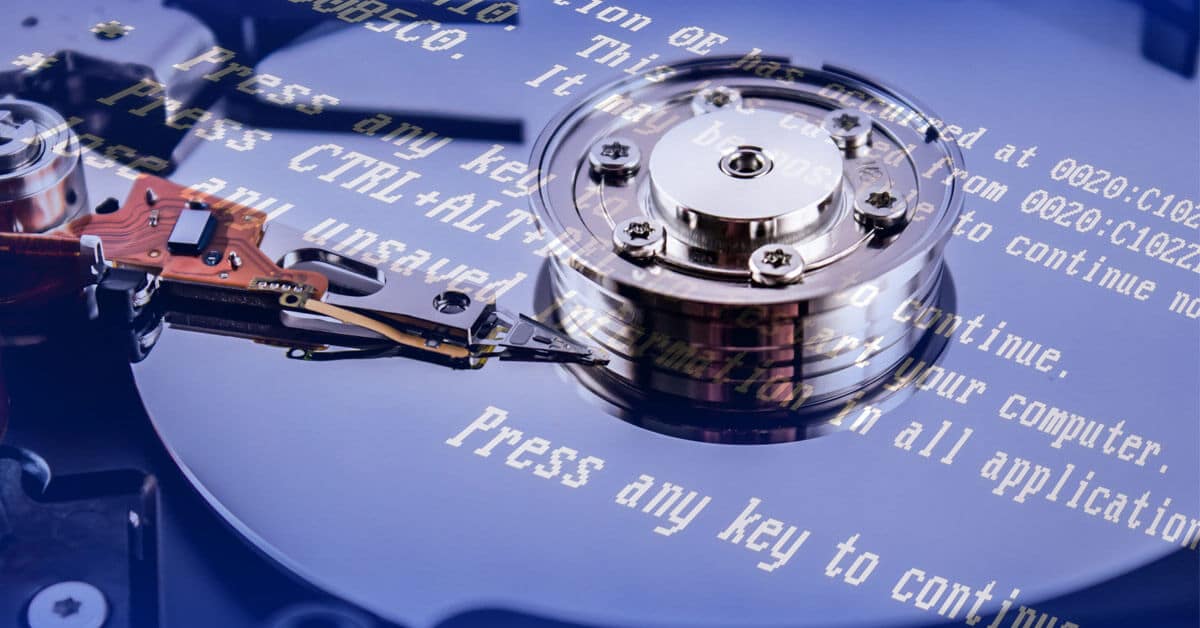
Subscribe to Our Newsletter

During the normal course of operations for any business or IT company, technology is often upgraded, replaced or reformatted. Residual data that can be recovered is called data remanence and can often expose sensitive company data.
While security protocols require companies to properly delete files by wiping or even degaussing, it is also a good practice to fully encrypt drives or other devices before a huge data overhaul to make all files unreadable without a specific security measure. Not taking these safety measures can put highly sensitive data in jeopardy. Find out how to mitigate these risks.
Easy Is It to Recover Overwritten Data?
If you or your IT consulting company have used security tools to overwrite data, it is nearly impossible for someone to recover the data. However, it is important to note here that you should be wiping the data during this process, not deleting it, which is where the discussion about data remanence really begins.
This entails using specially designed wiping tools that will do things such as look for leftover hidden files, restore the functionality of your operating system and, finally, provide a certificate of validation that all of the data has been wiped.
end this process, we suggest using a wiping tool that will overwrite your data three times: first with all zeros, second with all ones, and third with a pseudo-random pattern generated by the software.
Devices That Aren’t Receptive to Overwriting
After wiping your company’s devices of all data in the manner listed above, understand that there still exists certain risk considerations, the biggest one being whether or not the device was receptive to the overwrite.
Your company’s data can be compromised if the device is not receptive to the overwrite due to unusable tracks in a disk drive. If you have previously stored data on a portion of your device that has developed an unusable track, it may be difficult to completely wipe that information from the device due to the software’s inability to access it for the overwrite.
To mitigate this risk, check all devices for unusable or damaged areas before uploading sensitive data onto the disk, and once you identify an unusable track, discontinue use of the device. If you’ve find that the device is not receptive due to this issue, try degaussing or destroying the data.
Cloud Computing and Data Remanence
As today’s digital landscape changes to an environment based on cloud computing, data security becomes increasingly more important. At every stage of data storage, regardless of which service you are using (SaaS, PaaS, or IaaS), one basic risk is that the data can be exposed to unauthorized parties.
What is striking about the connection between cloud computing and data remanence is that most cloud servers do not mention anything about data remanence in their services.
For this reason, mitigating the risks of data remanence in cloud computing means contacting your IT solutions company and cloud computing server to understand how they can work together to ensure that no important data is inadvertently released to third parties.
The Threat of Data Remanence Is Low if You Understand the Risks
By informing yourself and your colleagues of these cybersecurity protocols and risks and following the steps above to mitigate potential pitfalls, data remanence can be managed and does not pose a major threat to your company’s sensitive data.
Source List:
https://gxait.com/who-we-are/
https://fas.org/irp/nsa/rainbow/tg025-2.htm#HDR4 2 15
https://gxait.com/wp-content/uploads/2017/09/DataRem_CHES2005.pdf
https://www.safaribooksonline.com/library/view/cloud-security-and/9780596806453/ch04.html